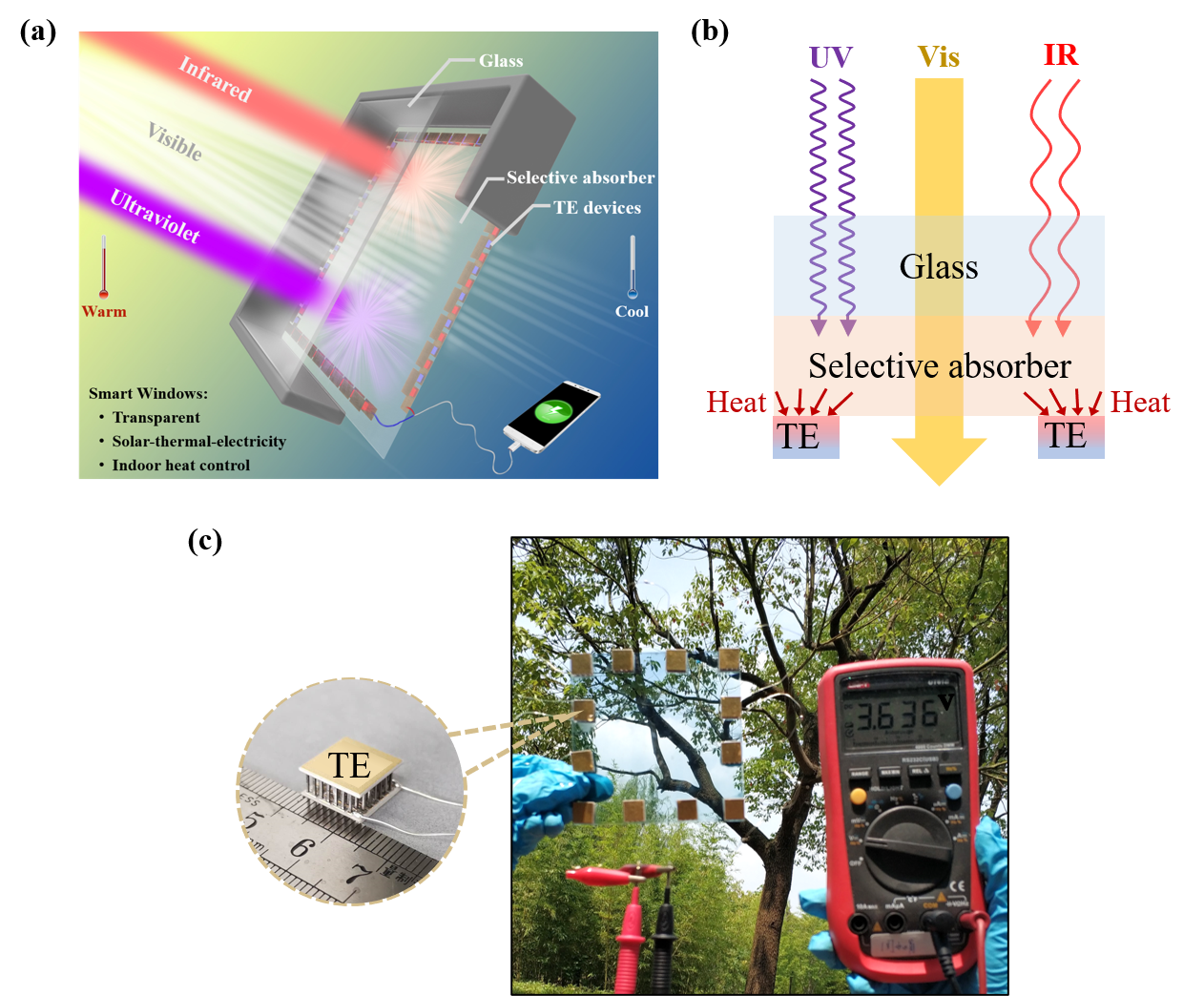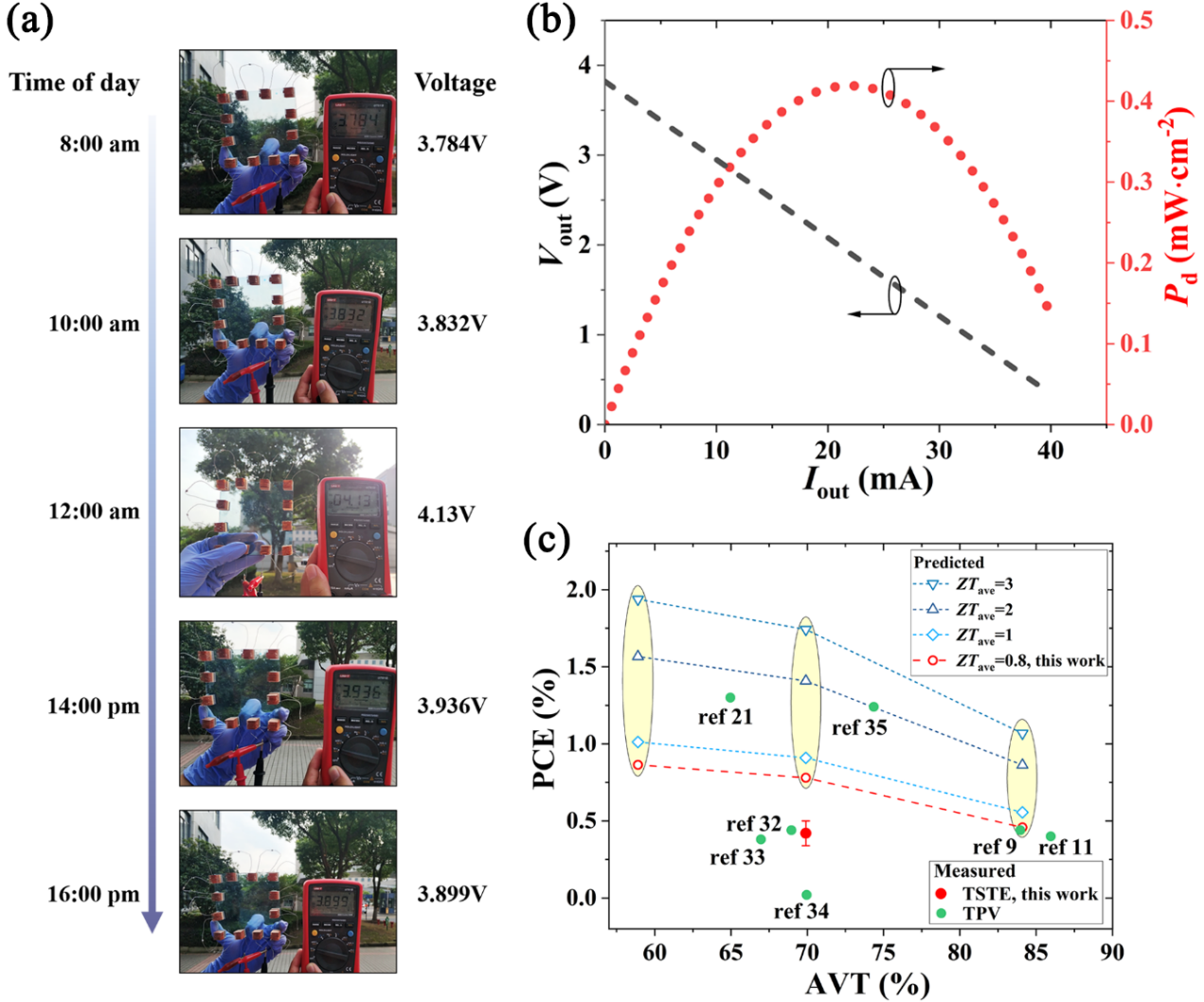The International Energy Agency reported that buildings and their related energy consumption have accounted for more than one third of the total global energy, and the contribution of building energy to global carbon dioxide emissions is close to 40%.
As the most significant heat exchange channel between buildings and the outside environment, accounting for 50% of the energy inflow/lost from buildings, the use of windows for energy efficiency and power generation is a powerful complement to the use of roofs and walls.
The existing power generation window technology mainly combines transparent photovoltaic cells with architectural glass. However, the increased power generation efficiency often comes at the expense of window transparency. For example, ultrathin perovskite solar cells can yield a high efficiency of 13.6%, but the average visible transmittance is only 7% and such cells should be referred to as semitransparent. An average visible transmittance of up to 88% has been demonstrated in the transparent luminescent solar concentrators, but the power-conversion efficiency is lower than 0.5%.
Recently, the scientists from Shanghai Institute of Ceramics Chinese Academy of Sciences proposed a new type of transparent power-generating windows that combines solar-thermal-electric conversion with materials’ wavelength-selective absorption. The wavelength-selective film, consisting of Cs0.33WO3 and resin, possesses high visible-light transmittance of up to 88%. Meanwhile it allows for efficient and selective harvesting of ultraviolet and infrared lights, and converts the absorbed light into heat.
Thermoelectric devices are designed to be arranged along the edge areas of the film. Heat is collected continuously by the large-area wavelength-selective film and then laterally conducted to the hot side of thermoelectric devices, where heat is converted into electricity.
This power-generating system decouples the energy conversion efficiency from light transparency of the window, thus enabling independent regulation for both. Meanwhile, owing to infrared light being absorbed, this technology can also reduce the cooling load of the buildings, achieving efficient energy savings comparable to Low-E glass.
Thus, its ability to operate at ambient temperature, simple structure, and ease of installation renders it suitable for widespread applications such as building glass and vehicle windows.
Relevant results have been published in Advanced Energy Materials entitled “Transparent Power-Generating Windows Based on Solar-Thermal-Electric Conversion”.
This work was supported by the National Key Research and Development Program of China, National Natural Science Foundation of China, Chinese Academy of Science.

Schematic diagram and demonstration of energy-saving power window technology based on solar-thermal-electric conversion

Power-generating performance of a typical solar-thermal-electric power-generating window

Energy-saving analysis and comparison of solar-thermal-electric power-generating windows with other technologies
Reference:
https://doi.org/10.1002/aenm.202101213
Contact:
Prof. BAI Shengqiang
Shanghai Institute of Ceramics
Email:bsq@mail.sic.ac.cn

